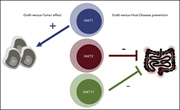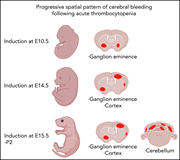Issue Archive
Table of Contents
BLOOD COMMENTARIES
PERSPECTIVE
Exploring the pathways to chronic lymphocytic leukemia
In this Perspective, Stevenson and colleagues offer a view of the evolution of CLL, integrating the current understanding of the intrinsic biology of the disease and the cells of origin with emerging insights arising through studies of the consequences of the clinical effects of precise targeting of the pathways essential for growth and survival of the malignant cells. They highlight that further advances in therapy beyond inhibitors of B-cell receptor signaling and BCL2 can be informed through biological studies that reveal new pinch points of vulnerability in the leukemic cells.
CLINICAL TRIALS AND OBSERVATIONS
Efficacy of venetoclax plus rituximab for relapsed CLL: 5-year follow-up of continuous or limited- duration therapy
Clinical Trials & Observations
Ma and colleagues provide a long-term follow-up of the first trial of venetoclax-rituximab treatment for relapsed chronic lymphocytic leukemia (CLL), reporting a progression-free survival (PFS) rate of 56% at 5 years for all patients. For the 67% of patients achieving a deep response, treatment with venetoclax was either continuous until progression or limited-duration (for a median of 1.4 years). While the decision about duration of therapy for individual patients was not a randomized one, in post hoc analyses the data suggest similarly high rates of PFS (>78%) after 5 years with either approach.
HEMATOPOIESIS AND STEM CELLS
Cytokine combinations for human blood stem cell expansion induce cell-type– and cytokine-specific signaling dynamics
Wang et al investigated ERK signaling dynamics in live human cord blood stem and multipotential progenitors, using a novel quantification approach that combined biosensors, time-lapse imaging, and microfluidics. They reveal that reponses to cytokines are heterogeneous yet specific in a cell type–dependent manner. Conceptually and technically, this work opens the field to exploration of time as a critical variable in signaling responses by the multipotential cells central to blood cell formation.
IMMUNOBIOLOGY AND IMMUNOTHERAPY
Invariant natural killer T-cell subsets have diverse graft-versus-host-disease–preventing and antitumor effects
Unconventional T cells are increasingly recognized as contributors to hematopoietic stem cell transplant (HCT) outcomes. In a pioneering study, Maas-Bauer and colleagues have defined the genotypic, phenotypic, and functional characteristics of one type of unconventional T cell, invariant natural killer T (iNKT) cells, and their sublineages, both at steady state and after allogeneic HCT. They show that iNKT1 cells have high antitumor activity and that iNKT2 and iNKT17 cells mitigate acute graftversus-host disease in murine models.
LYMPHOID NEOPLASIA
Dimethyl fumarate induces ferroptosis and impairs NF-κB/STAT3 signaling in DLBCL
PLATELETS AND THROMBOPOIESIS
Severe thrombocytopenia is sufficient for fetal and neonatal intracerebral hemorrhage to occur
Using both genetic and antibody-mediated models of severe thrombocytopenia, Farley et al addressed the important issue of intracranial hemorrhage (ICH) in fetuses and neonates. They challenge prior studies that questioned whether severe thrombocytopenia alone could lead to ICH during development. Their models reveal that platelets are required throughout embryogenesis and into neonatal life to prevent ICH and that the timing of onset of severe thrombocytopenia determines the location of intracerebral bleeds.
TRANSPLANTATION
The clinical and functional effects of TERT variants in myelodysplastic syndrome
Reilly, Myllymäki and colleagues report that rare TERT germline variants occur in approximately 2.7% of patients with myelodysplastic syndrome (MDS) without overt clinical teleomere biology disorders. They quantify the impact of 40 rare variants on telomere elongation in cell-based assays, identifying that 90% of these result in impaired teleomere elongation. Patients with these variants are younger and have shorter telomeres on average than other patients with MDS; they are also at increased risk of non-relapse mortality after stem cell transplant.
BLOOD WORK
-
Cover Image
Cover Image
![issue cover]()
Three-dimensional confocal z-projection of the dermal layer of skin from an embryonicday14.5Nfe2−/− mouse embryo. Nfe2−/− mice have severe in utero thrombocytopenia. A component of the prenatal Nfe2−/− phenotype is the leakage of erythrocytes (TER119; gray) from the peripheral circulation (PECAM1; red) into the lymphatic vessels (LYVE1, green). See the article by Farley et al on page 885.
- PDF Icon Front MatterFront Matter
- PDF Icon Table of ContentsTable of Contents
- PDF Icon Back MatterBack Matter
- PDF Icon Editorial BoardEditorial Board
Advertisement intended for health care professionals
Email alerts
Advertisement intended for health care professionals









To start and stop or just keep going?
Clinical Trials & Observations